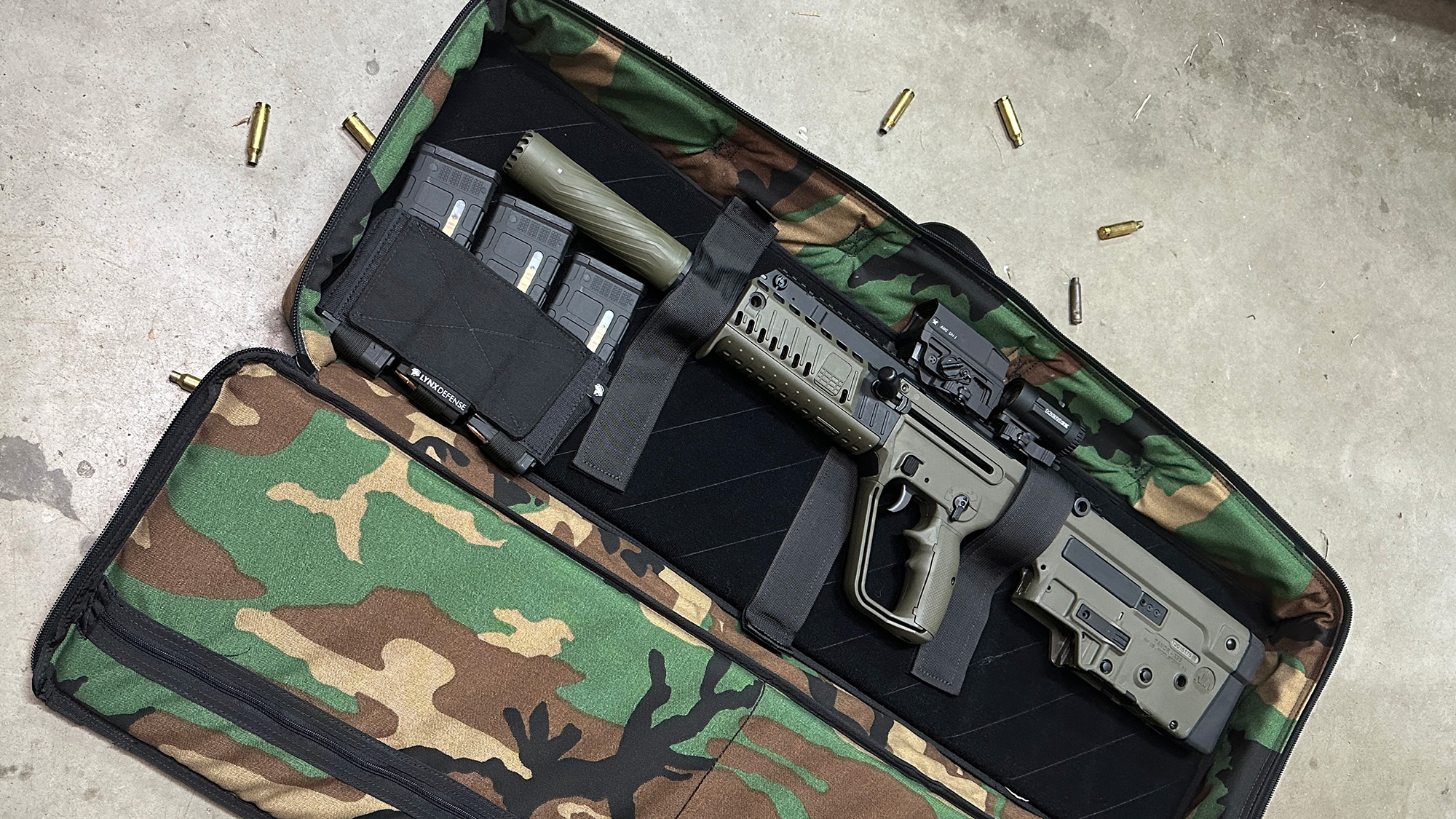
Ready to see what we have coming?
Lynx Defense will release some new things soon. Let us deliver them right to your inbox!

Lynx Defense will release some new things soon. Let us deliver them right to your inbox!
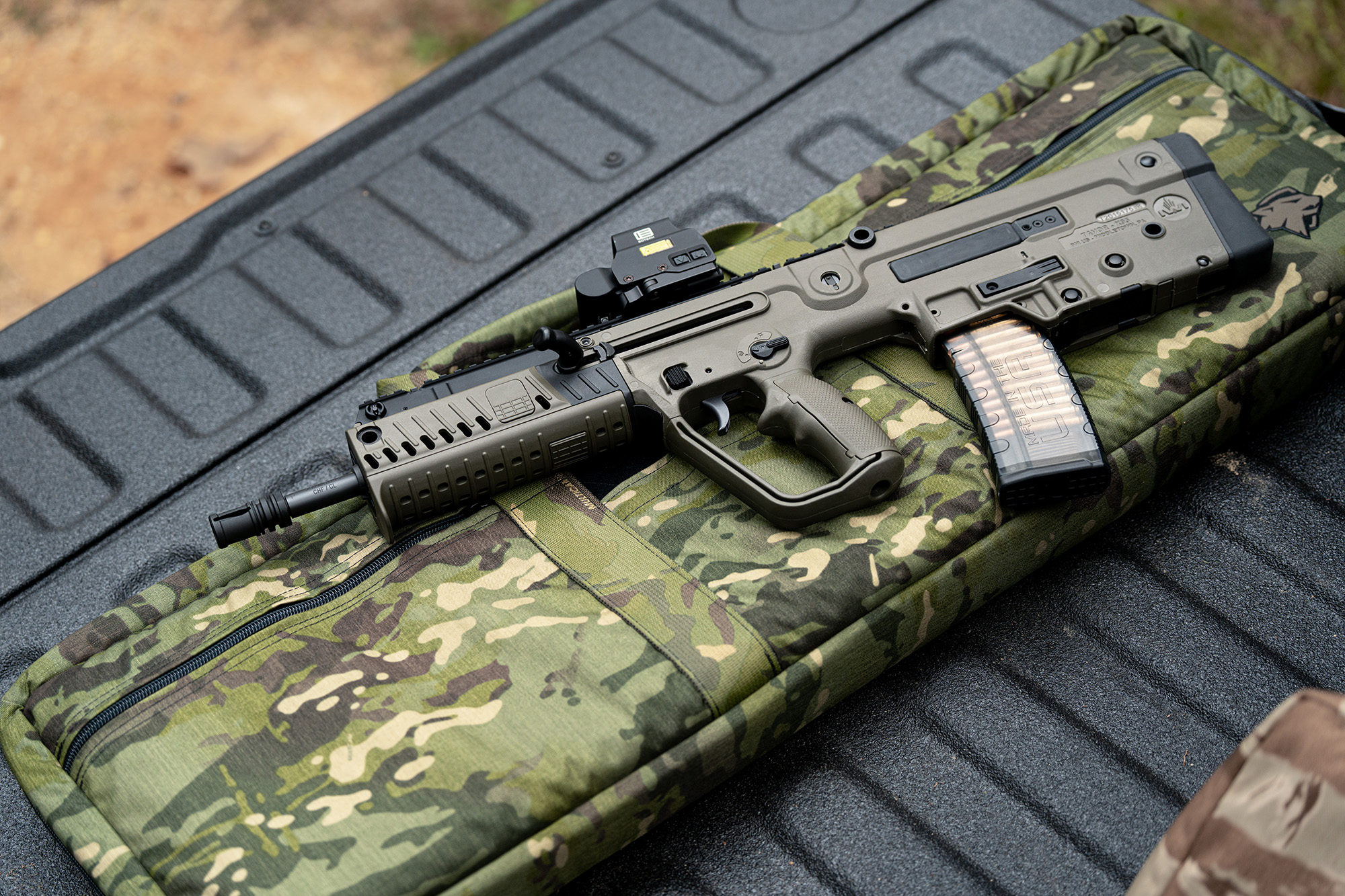
We may earn revenue from product links on this page and participate in affiliate programs. Learn More ›
Bullpup rifles have been growing on me over the last year as I’ve finally warmed up to the idea of the ejection port and bolt being right near my face.
Because of my growing love of bullpup rifles, I’ve naturally come across the Tavor x95.
I’ve had the Tavor for some time and feel comfortable enough to provide a good hands-on review of the Tavor x95.
Fundamentally, bullpup rifles have the same set of controls as any other modern rifle, like the AR-15. Still, their ergonomics and overall feel differ greatly from a traditional rifle.
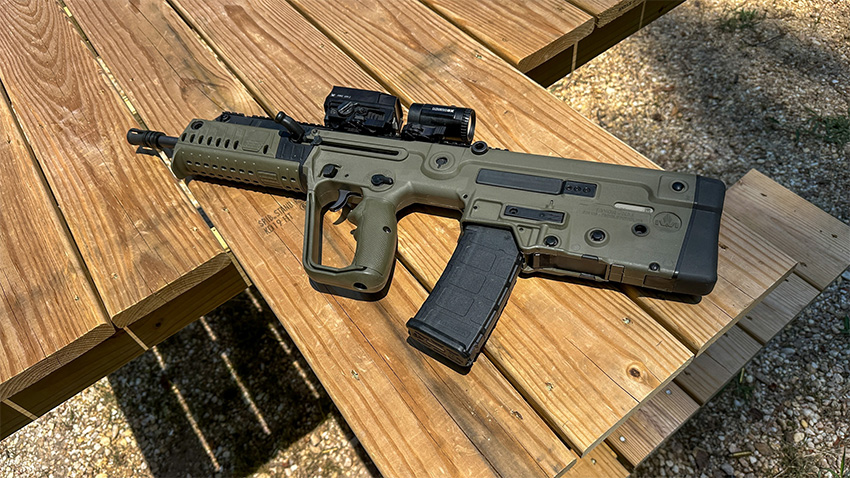
Typical bullpups have their grip directly in the middle of the rifle and most of the gun’s weight is toward the rear.
The x95’s safety is located directly about the grip and isn’t ambidextrous. There are ambi aftermarket options, like the Manticore Arms Tavor LUMA safety.
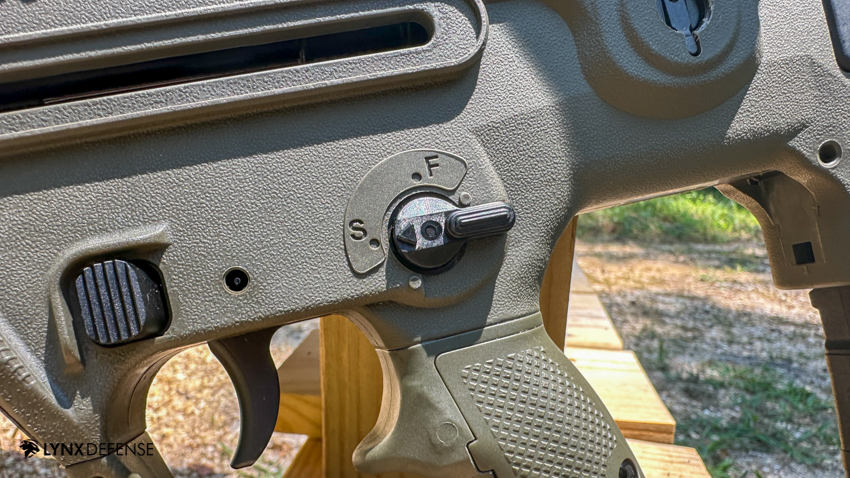
But you’ll need to purchase that separately and install it. While I wish a gun at this price point would come with an ambidextrous safety, it’s not that big of an issue for right-handed shooters.
The safety functions like an AR-15 safety and nearly looks the same. It is extremely easy to use the safety without taking your hand off the grip.
With my thumb’s smooth operation and ease of reach, I have to give this safety high marks.
The grip landing smack dab in the middle of the gun makes the x95 look nearly space-like.
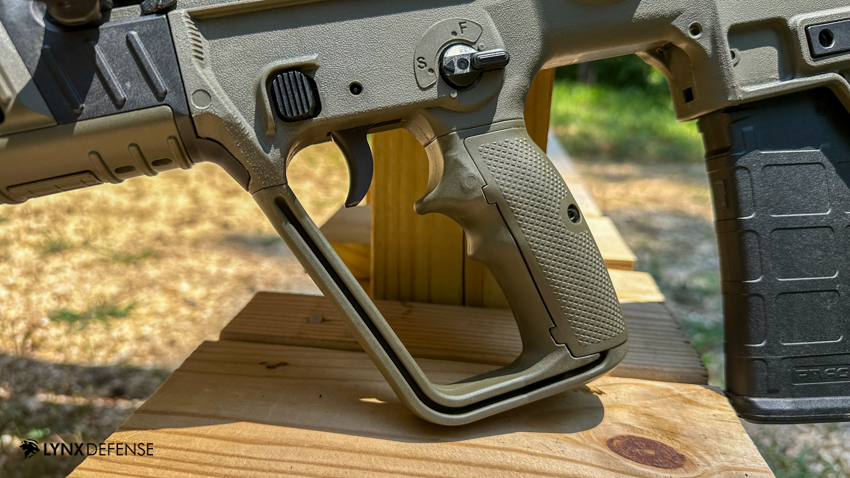
But the middle grip allows you to balance the rifle extremely well. It makes it so that the weight, even as unevenly distributed as it is, is manageable and not overbearing.
Like the rest of the gun, the grip is a polymer, and the backstrap features mild texturing. On the inside of the grip is a slight bump for your middle finger to bump up against, similar to the A2 AR grip but not annoying and in the way.
The grip works nicely, and overall, I like how it balances the weight because while this is a polymer gun, it’s not a lite gun.
The controls on this gun are unique; if you’re used to AR-style rifles, you should spend a lot of time practicing and becoming familiar with the controls.
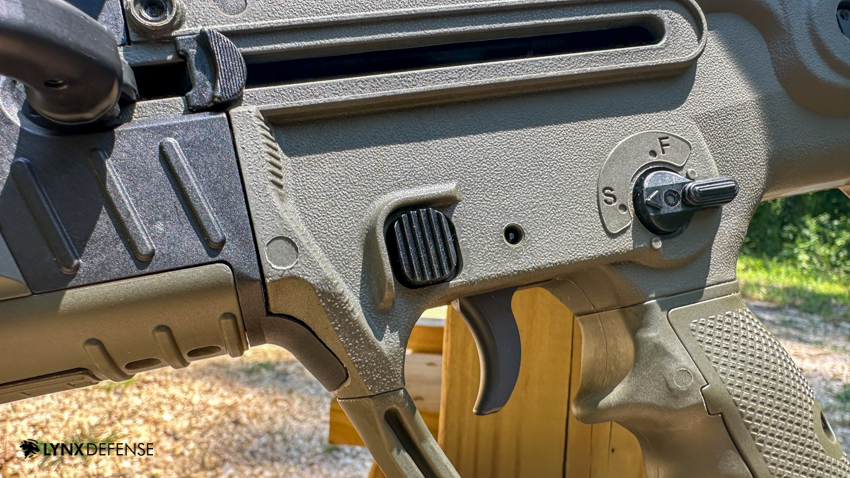
This feature takes some getting used to; it sits just above the trigger and is ambidextrous.
It’s a bit different because the button is raised at the back and the serrations face toward the front of the gun, which is the opposite of what you’d think.
The release is easy to press and quickly drops the magazine free and the button is easy to reach without breaking your grip.
The x95’s magazine well sits near the back of the gun behind the grip but directly below the ejection port.

Ejection on the x95 differs from other bullpups like the PS90 and the RDB because it ejects to the side vs downward ejecting.
The magazine well doesn’t have a large flared magazine well but it does funnel magazines well.
One major feature that is so unique I don’t think any other firearm on the market today has a bolt release/hold open like the Tavor.
The bolt release is located on the bottom of the gun directly behind the magazine well.
It’s a flat button press on a pivot system. One side is marked with a few serrations, which is how you lock the bolt to the rear after pulling the charging handle.
Then the plate sticks up, and to drop the bolt, you press the side that’s up, and the bolt slams forward into battery.
The Tavor is unique due to its ability to become truly ambidextrous. You can change over the charging handle and even the ejection side.

From what I can tell, it’s somewhat complicated just flipping through the manual, so this isn’t a quick swap, but it can be done for someone who is left-handed.
Like many other controls of this gun, it’s located in the middle of the gun. The charging handle is a plastic/polymer design and rocks backward when you pull it.
This is a side-charging gun, which is likely why the side-charging AR-15s made a popular resurgence lately, and overall, the charging handles operate smoothly.
People typically touch and analyze triggers first when considering a firearm purchase.
They are probably the most important control on the whole gun, as they make the rifle operate.
One of the biggest cons of the x95 is that it is right out of the box; it is a single-stage trigger.
Most rifles today come standard with a two-stage trigger, especially at this price point.
This trigger has a good bit of take-up and no defined wall; hence, it is a single-stage trigger.
There are options to make this a two-stage trigger, but I’ll warn you, they are pricey.
While the lack of a two-stage is disappointing, the trigger isn’t unbearable, and while it’s a polymer trigger, it does feel sturdy.
The stock is one solid piece that basically houses the entire gun. Most of the operating components of the x95 are located in the stock, including the bolt.
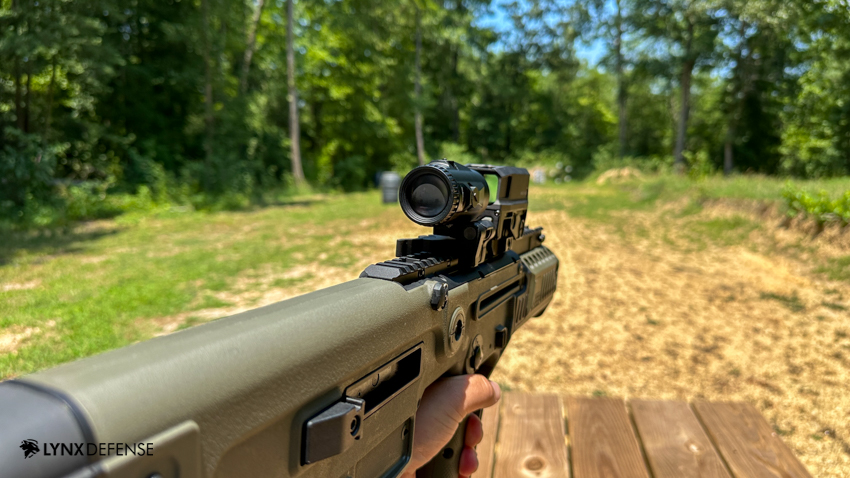
There is no easy way to adjust the length of pull on the Tavor x95, however there are some aftermarket buttpads that can help with length of pull some.
Configuring your Tavor x95 can be tricky as there are many options, but unlike many AR-15s and other modern rifles, the Tavor has some cool features you must consider when accessorizing.
IWI’s x95 has folding iron sights built directly into the top rail of the gun. This can save you $150-$300 by not having to add iron sights like you would with some flat-top AR models.
One cool feature of the sights is that they become part of the 1913 rail when lying down.
But on the flip side, they can also become useless or a hindrance because they need to be free and clear to pop up if you want backup iron sights.
For example, I have the Vortex AMG UH-1 and the Vortex 3x Magnifier on my gun. In its current position, the magnifier will not allow the rear sight to pop up without taking off the magnifier.
This isn’t a big deal because it’s on a QD mount, and in a pinch, the magnifier could be popped off the rail and the backup iron sight flipped up.
While I touched on this briefly in the section above, you can mount nearly any optic you choose on the 1913 rail.
I like the UH-1 or EoTech based on how I would utilize a bullpup rifle in my rifle lineup.
But you could easily use any red dot or even get wild with an LPVO.
The IWI Tavor x95 can be a bit tricky to mount accessories unless your accessories are top rail 1913 mounts.
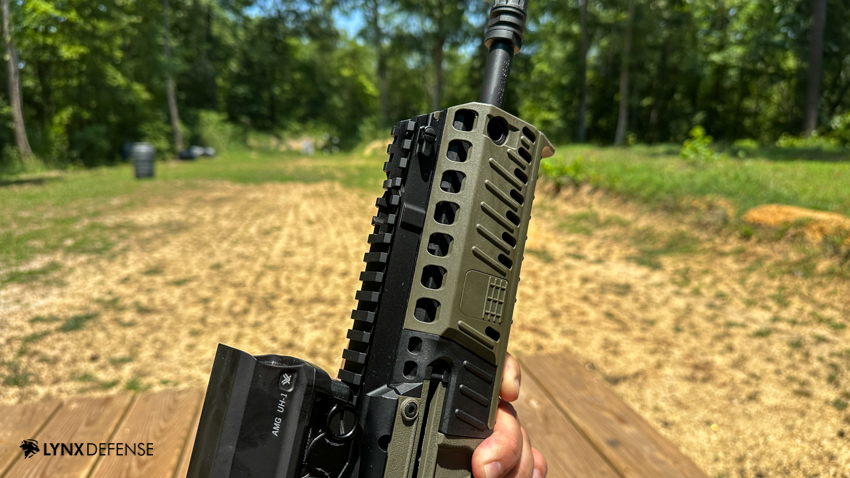
The x95 has no M-Lok attachments, but a few quick searches lead you to many Reddit threads touting aftermarket rail options.
The easiest way to get some attachment functionality is to replace the front rail section of the gun.
My favorite option for this is the BLK LBL Handguard; it comes in all three colors the x95 IWI offers and 3 different lengths.
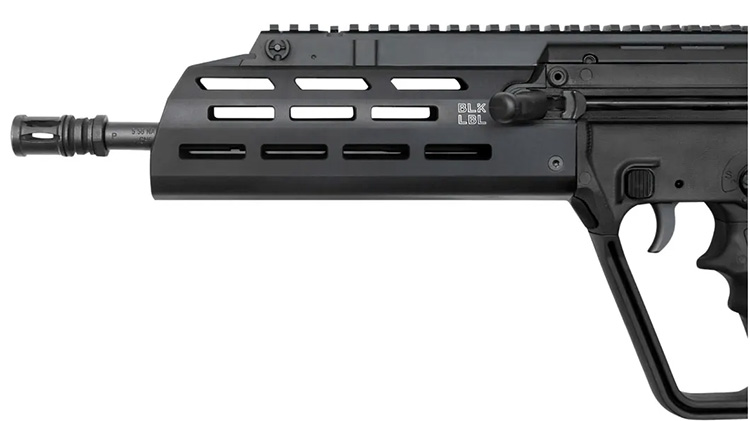
Depending on the length you choose will depend on how many m-lok slots you get for attachments.
Shooting the x95 is somewhat of a mixed bag for me.
It has a good bit a pop in the recoil and since it’s a bullpup the recoil is substantially louder and more concussive than a 16″ AR-15.
The trigger is not good.
While I like this gun from an aesthetic perspective.
It’s never going to be a go-to gun for me.
I do want to shoot the gun suppressed to see if that changes my opinion on it at all.
I have picked up an Anechox 30 in OD Green to see how that does.
I’ll report back my findings.
I don’t think a suppressor will reduce the felt recoil, I think that’s here to stay.
Ammo is easy to come by for the x95 because it comes in three popular flavors— 300 Blackout, 5.56 NATO, and 9mm.
However, IWI claims that the 9mm and 300 Blackout versions have been discontinued, so they may have to be found secondhand.
Here are some great options and deals to feed your x95 the ammo it needs.
One of the major benefits of the bullpup is the overall length of the rifle system.
Clocking in at 26″ inches, you can use smaller, more discreet bags and cases to carry the weapon system.
I love carrying this gun in the Bureau, our 30″ discreet rifle case.
It doesn’t draw much attention to the bag and thus allows me to travel easily.
There’s also the option of getting a Solo, our more tactical 36″ rifle case option.
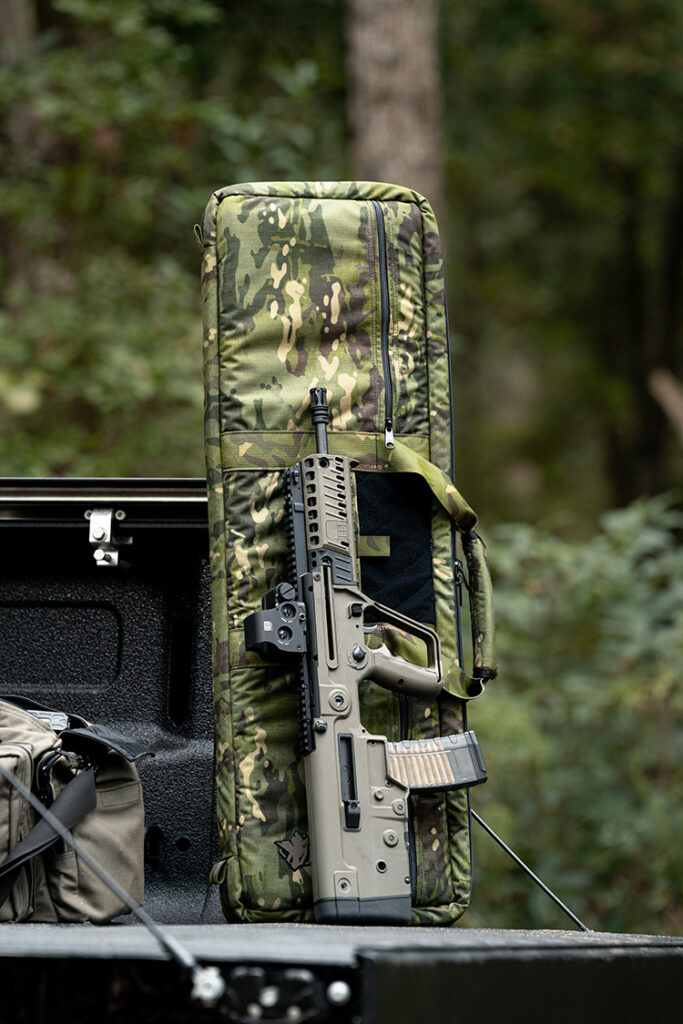
I don’t love or hate the Tavor X95.
If you love bullpups, you might love this gun.
I think it’s a great range gun, but it’s heavy and the recoil impulse is worse than an AR-15.
If you want to go for an x95, it will take some time to get used to the ergonomics.
Yes, the Tavor x95 is a battle-tested gun and has been put through its paces.
Its controls may have a slight learning curve for someone familiar with AR-style rifles, but the x95 holds its own.
It’s hard to say which is a better firearm, depending on the application.
The M4/AR style rifle is more widely used; thus, parts and accessories are easier to come by, but the Tavor does bring a different ergonomic and function to the table.
Comparing the Tavor and the AK-47 involves considering a range of factors, as each rifle has its unique strengths and weaknesses, making them suitable for different use cases.
The Tavor, part of the bullpup family of firearms, is known for its compact design, which offers a shorter overall length without sacrificing barrel length.
This makes it particularly advantageous in close-quarters combat and urban warfare, where maneuverability is key. Additionally, the Tavor’s design allows for easier use with body armor and in vehicles.
Its modern ergonomics and modular design also mean it can be easily customized with various accessories.
However, the bullpup configuration can be less intuitive for shooters accustomed to traditional rifle layouts, and some criticize its trigger feel.
On the other hand, the AK-47 is famed for its reliability and durability.
It performs well in harsh conditions and requires minimal maintenance, making it a favorite in many parts of the world, especially in rugged and adverse environments.
The AK-47’s simplicity and ease of use are also notable, making it a good choice for less experienced shooters.
However, it generally lacks the accuracy and range of more modern designs like the Tavor, and its standard configuration is less adaptable for modern tactical accessories.
Ultimately, the choice between a Tavor and an AK-47 should be based on the specific requirements of the user.
The Tavor may be preferred for situations that demand a compact, adaptable weapon with modern ergonomics, while the AK-47 could be the better choice for scenarios requiring a rugged, easy-to-use firearm that performs reliably under a wide range of conditions.
Each rifle’s design reflects a different approach to solving the challenges of infantry combat, and the best choice depends on the specific needs and preferences of the user.
Tavor’s adoption by Israel is driven by its suitability for urban and close-quarters combat, adaptability to modern warfare needs, ergonomic design, compatibility with body armor, support for the national defense industry (Israel Weapon Industries), and customization to meet the specific requirements of the IDF.
These factors combined make the Tavor a practical choice for Israel’s unique defense needs.
Concealed Carry Insurance
Protect yourself and all those who carry concealed in your house.